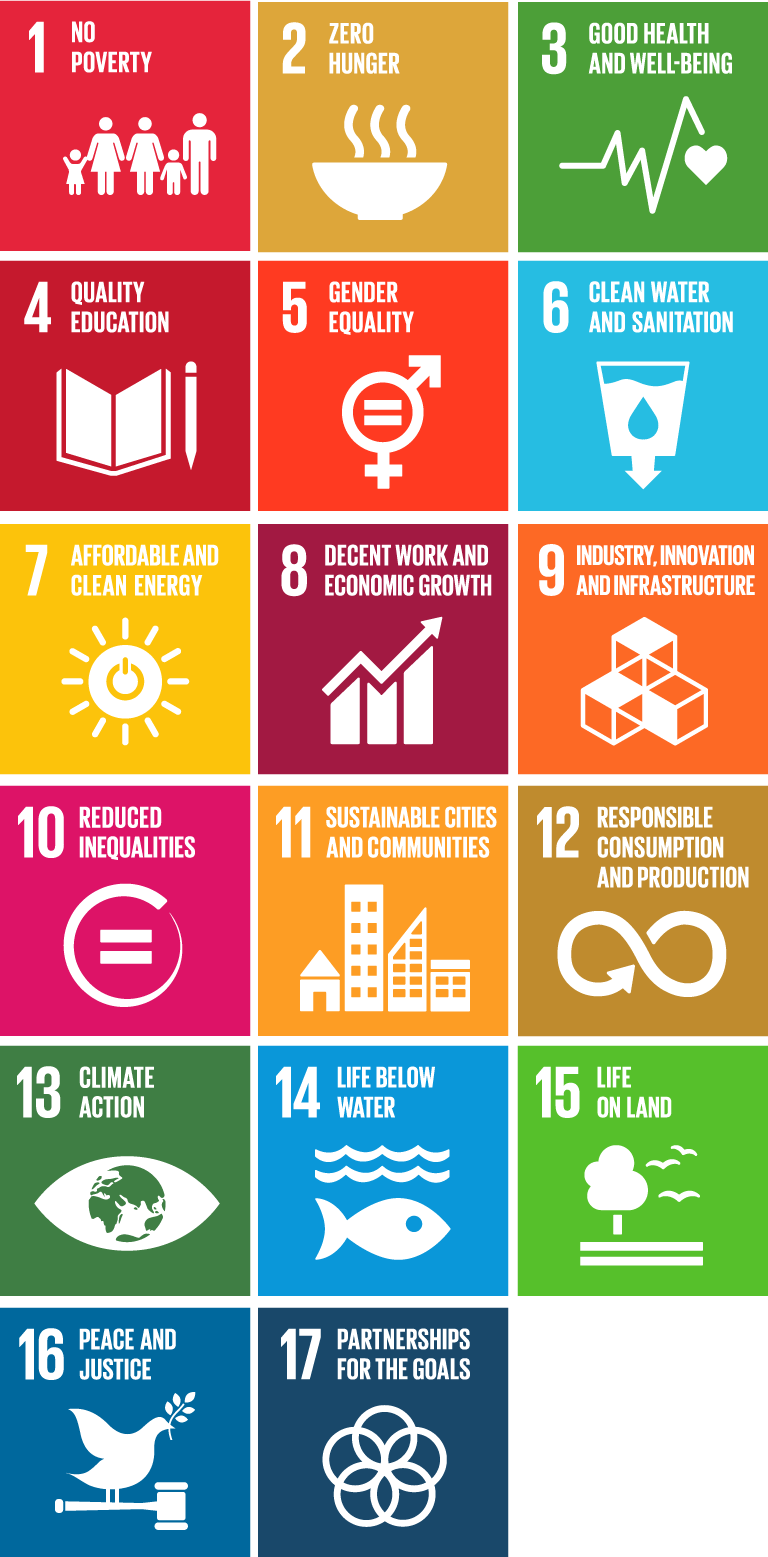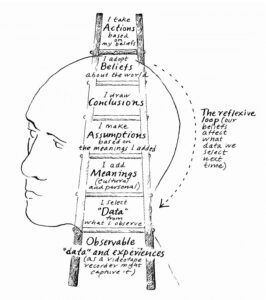Apr
19
Sustainable Development Goals
April 19, 2024 | | Leave a Comment
Prompt: How does the interaction of international and domestic factors empower or hinder some states of the Global South in making progress toward the UN Sustainable Development Goals compared to other states?
Sustainable Development Goals, or SDGs, are 16 goals outlined by the United Nations that show ways that countries can improve the lives of citizens and strengthen their institutions. Most important of these is Goal 16, or “Peace, Justice, and Strong Institutions”, which encapsulates the results of the rest of the SDGs. Many countries in the Middle East, such as Iraq, Morocco, and Jordan, have had complicated results in enabling these goals to be achieved.
Iraq, the country that I did a podcast episode on, has been plagued by domestic inequalities, failing to meet Goal 10, or reduced inequalities. There is both a large sectarian imbalance between the majority Shi’ite and the minority Sunni Muslims. There are also extreme economic inequalities, as 30% of the country lives below the poverty line. Iraq is also struck by corruption, ranking it in the bottom 30 of 180 listed countries in this metric. The country has the world’s 5th largest oil reserves and heavily relies on these reserves for its GDP. Oil money makes up a whopping 93% of the public budget. All of these factors contribute to Iraq’s poor institutions and make it hard for the country to reach Goal 16.
Morocco has made progress in achieving Goal 5, or gender equality. The most effective way in which advocates for gender equality can make change is through lobbying or establishing civil society organizations, or CSOs. The 2011 Arab Spring protests included protests for women’s rights, often with the slogan “Death Over Humiliation”. These protests led to a new Moroccan constitution that prohibited displacing married women. A new law in 2018 also limited violence against women. Global institutions and support from international organizations have helped Morocco come closer to achieving this goal. However, though they have made some changes to their laws, these changes are not always reflected in behavior or attitudes. Officials have also failed to incorporate further laws protecting the rights of women, especially when drafting the Moroccan constitution. Morocco has had to limit judicial corruption that was affecting policy implementation and effective usage of international investments. In order to continue on the path to achieving Goal 16, Morocco will have to consider how to implement solutions to its pressing gender inequality issue.
Jordan has made great strides to achieve the SDGs in various forms. They have increased the role of women in their military and government, decreased violence against women and children, crushed organized crime and corruption through anti-money laundering laws, and improved media literacy and access to information. However, the arrival of many refugees, doubling Jordan’s population, has led to further strain of labor markets, resources, and infrastructure. Water, two-thirds of which goes to agriculture, is being used faster than it is being replenished. This water is also procured through an unsustainable ground water extraction process. The government cannot afford decentralized waste water systems, and social norms refuse to reuse waste water. Jordan will have to reassess the way it uses its infrastructure and change its practices in order to be competitive in completion of the SDGs, perhaps through international organizations.

Image from the UN’s SDG Guide (sdg.guide)
Apr
14
Water Diary
April 14, 2024 | | Leave a Comment
My personal water use is 1,533 gallons per day, equivalent to about 5,803 liters. This is about 300 gallons less than the US average, at 1,802 gallons per day. My weekly use amounts to 10,731 gallons, and my annual use to 558,012 gallons. Per capita daily use in my area of the Middle East is 4,500 liters in Turkey, 5,100 liters in Iran, and 5,800 liters in Syria. No data was available for Iraq. The average daily use for the 15 countries in the Middle East and North Africa where data was available is 5,233 liters. The United States gets 80% of its water from internal sources, with only 20% water gained elsewhere. These numbers are quite variable in the Middle East. In this region, the numbers are similar to the United States, with 79% for Turkey, 82% for Iran, and 84% for Syria.
If a country depends on water from freshwater imports or from “virtual water”, i.e. imports that used water to make the final product, then that will affect how the country interacts with other countries. These three countries depend on fewer imports of water to sustain their population. However, the countries are still very water stressed, as caused by urbanization, climate change, and poor infrastructure in some places. The poor infrastructure used to desalinate water and provide it to people has hindered development. Water problems have also led to political tensions. Turkey and Syria in particular have had conflict over access to water in the Euphrates River. Turkey has placed dams on the Euphrates to gather further resources that also limit the flow of the river into Syria. The river is essential to Syrian agriculture and development, leading to tensions. Syria accuses Turkey of pressuring Syria through control of the dams, while Turkey insists on its fair use of the dams through international agreements. Turkey’s use of the dams for political pressure is clear, however, especially to resolve the issue of Syria’s support for the Kurdistan Worker’s Party (PKK). In exchange for discontinued support of the PKK, Turkey would release 500 cubic meters per second of water downstream. Syria exiled the leader of the PKK, improving relations with Turkey.
Iraq is another downstream country that receives water from the Euphrates River. When Iraq invaded Kuwait in 1990, Turkey cut off flow from the river. Turkey has debated in the UN over what constitutes fair share of the river’s resources. Politicians in the late 1990s began to cooperate with water policies. Turkey in particular began a policy of having zero problems with their neighboring countries. The three countries also came together in the Euphrates-Tigris Initiative for Cooperation (ETIC) that aimed to promote collaboration among the countries regarding water use and innovation. Turkey has signed the Memorandums of Understanding regarding water management with both Iraq and Syria, though the latter two’s governments eventually rejected the memorandums due to general mistrust of Turkey. The countries do not have a system in place to monitor data related to the use of water, which would highly benefit all involved.
Source:
“Turkey, Syria and Iraq: Conflict over the Euphrates-Tigris.” Climate Diplomacy. Accessed April 1, 2024. https://climate-diplomacy.org/case-studies/turkey-syria-and-iraq-conflict-over-euphrates-tigris.
Feb
22
The “Others” in Our Communities
February 22, 2024 | | Leave a Comment
In the United States, the people who tend to be treated more as “outsiders” through the law or by social treatment are immigrants and refugees, members of the LGBTQ+ community, racial and religious minorities, people with disabilities, single parents, low-income communities, and the elderly. In my college more specifically, the “outsider” dynamic may show up when viewing international students, LGBTQ+ individuals, those of a different race or religion, or members of a political party or social movement. They are each commonly seen as a monolith instead of individuals. Oftentimes one may assume they all feel the same about a topic, not acknowledging the great diversity of viewpoints within a single group. Our identities as humans are complex, and sometimes our different facets can overlap in contradictory ways. It’s easy to assume anyone who is a racial minority or LGBTQ+ will vote for the Democratic party or that someone from the rural south would vote for the Republican party, for example. But people’s reasons for their voting behavior are very complex.
On a greater scale, viewing other countries as monolithic “others” in world politics can lead to poorer policy decisions. When assuming how people in another country feel about things, we can ignore the complex factors that lead them to feeling how they do. A common identity that one thinks of when one thinks of residents of the Middle East is Islam. However, there are a great variety of sects within Islam, religious minorities in the Middle East, and other personality factors that lead to a more diverse Middle East than one might imagine. It is important to take a holistic view of a nation or region in dealings with them, or risk great misunderstandings. In previous U.S. dealings with Middle Eastern countries, there have been attempts to put in place governments that would benefit the United States, without fully considering the implications for the people in these countries. Generalizing people from another region can and has led to dehumanizing and discrimination. It can be hard to find common ground with people one sees in a monolithic way.

Feb
5
Where I Live: Where They Live
February 5, 2024 | | 3 Comments
For my entire life, I’ve lived in the Maryland suburbs of Washington, D.C. In contrast to many people’s descriptions of their hometowns, where I’m from lacks a strong sense of community. This is probably in part due to the rise of working mothers, but I also think it stems from “nomadic” lifestyles and people who work in international relations or the military and therefore move frequently. My family is one of only a handful of families that has lived in my neighborhood for the past 20+ years. My parents also both grew up in the D.C. suburbs, but in different towns. Our neighborhood is an area that spans only about a 15-minute walk. Most kids in the area, including me, attended the same elementary school right up the street, go to the same pool in the summer, and go to one of the churches or synagogues right in the area. People also used to frequent the beautiful nature trails, until they were shut down to build a rail system. These spaces are our few constants, but other than that, this area feels very transient. Washington, D.C., on the other hand, has been a constant for me my entire life. It has always been my favorite city and probably always will be. It has a global feel to it, since it is where all the foreign embassies are, and they are mostly designed using the architecture of their country. The rest of the city feels more European than a city like New York, since it has older, shorter buildings. There are, of course, many people from other countries, I think in part for foreign affairs purposes, but also regular immigrants. In D.C. and two neighboring cities in northern Virginia, Arlington and Alexandria, there are lots of different foods from all around the globe. Growing up near D.C. sparked my interest in other countries and how other people are similar to and different from me.
Students from the American University in Sharjah spoke about the different countries that they each call home. At AUS, there are students from at least Pakistan, Jordan, Saudi Arabia, and the UAE. I learned that the majority of residents (almost 90%!) of the United Arab Emirates are expatriates. The top countries that residents are from are India, Pakistan, Bangladesh, and the Philippines. In contrast, only 13.6% of United States residents are foreign-born. Most people in the UAE practice Islam, while only 1.1% of the United States practice Islam– a big difference.
Sharjah, as opposed to where I’ve lived, is quite large. The buildings are tall and beautiful, and they have beaches right nearby. English is the most widely-used language, but many people also speak Arabic or another language. Besides these cultural differences, life for these college students seems similar. One difference was of note: living situations. I am told that most students commute to and from school, with commute times of up to two hours. Dorms are reserved for study-abroad students or students where home is too far to simply commute.